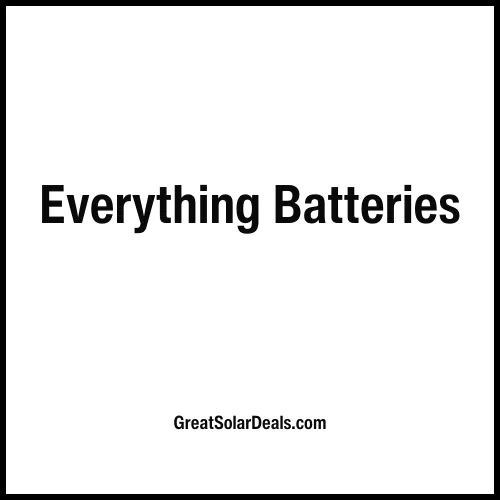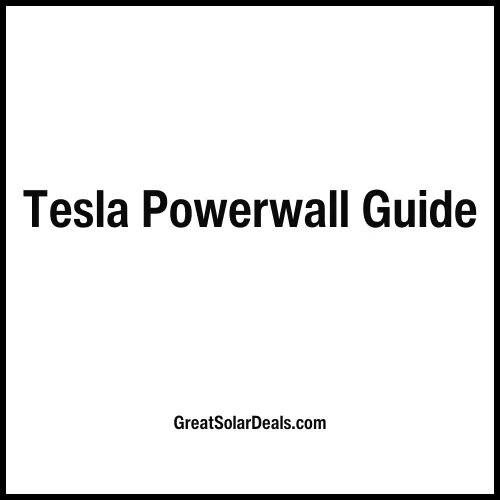Which type of solar panel is best for you?
Out of the three types of solar panels, monocrystalline are the most efficient, polycrystalline are the cheapest, and thin-film panels are the most portable.
The type of solar panel you need depends on the type of system you want to install. For a traditional rooftop solar panel system, you'll usually want monocrystalline panels due to their high efficiency. If you have a big roof with a lot of space, you might choose polycrystalline
panels to save money upfront. Want to DIY a portable solar setup on an RV or boat? Thin-film solar panels are a great option.
Over the last 130 years, solar panel technology has evolved in the pursuit of higher efficiency, lower costs, aesthetics, and durability. While each of the three modern designs comes with advantages, the current solar panel market tends to align panel technology with the most cost-effective and savings-driven application.
Here's how to find solar panels that make the most sense for you.
Key Takaways
The three main types of solar panels are monocrystalline
polycrystalline, and thin film.
Monocrystalline solar panels are the most efficient.
Polycrystalline solar panels can be the most cost-effective.
Thin-film solar panels can be the best for DIY projects or RVs.
What are the primary types of solar panels?
There are three major types of solar panels: monocrystalline, polycrystalline, and thin-film. The solar panel type best suited for your installation will depend on your preferences and factors specific to your own property.
Pros and cons of different types of solar panels

What type of Solar Pane is Best?
Monocrystalline solar panels generally offer the highest quality. But if cost or ease of installation are more important to you, it's worth exploring other options. Here are some things to keep in mind:
Monocrystalline panels are the most efficient of the crystalline solar panels at 17-22% efficiency.
Polycrystalline panels are less efficient at 15-17% efficiency but can be the most cost-effective option.
Thin-film solar panels are best for RVs or other unconventional roof styles. They're the most resilient.
How expensive are different types of solar panels?
Each type of panel comes with a different price tag, primarily due to differences in the manufacturing processes.
Monocrystalline solar panels: The most expensive
Monocrystalline panels are usually the most expensive solar panel type. Manufacturers must absorb the costs of making solar cells from a single crystal. This process, known as the Czochralski process, is energy-intensive and results in wasted silicon. But don't worry–this silicon can later be used to manufacture polycrystalline solar cells.
Polycrystalline solar panels: Less expensive
Polycrystalline solar panels are typically cheaper than monocrystalline panels. The cells come from silicon fragments rather than a single, pure silicon crystal. This allows for a much simpler cell manufacturing process, costing less for manufacturers and homeowners who install the panels.
Thin-film solar panels: It depends!
What you pay for thin-film solar cells largely depends on the type of thin-film panel. CdTe is generally the cheapest type of solar panel to manufacture. CIGS solar panels are much more expensive to produce than CdTe or amorphous silicon.
The overall cost of a thin-film solar panel installation is usually lower than a monocrystalline or polycrystalline
solar installation. Thin-film solar panel installations are less labor-intensive because the panels are lighter and more maneuverable. It's easier for installers to carry them onto rooftops and secure them. Installers generally charge less for labor with thin-film panels, making the installation less expensive overall.
How efficient are different types of solar panels?
Each type of solar panel varies in how much power it can produce. If you have limited roof space, choose a
high-efficiency solar panel to get the most out of your system.
Crystalline solar panels: Middle- to high-efficiency
Monocrystalline panels typically have the highest efficiency and power capacity. They can reach efficiencies of over 22% and provide over 300 watts (W) of power capacity. Many even exceed 400 W. Polycrystalline solar panels, on the other hand, rarely exceed 17% efficiency and tend to have lower wattages.
Monocrystalline solar panels also tend to perform better than polycrystalline panels in warm temperatures. They usually have lower temperature coefficients, which means they maintain higher efficiencies when it's hot outside.
While they differ in performance, monocrystalline and polycrystalline panels are about the same size physically. Both types of solar panels tend to come in 60, 72, and 96 silicon cell options.
Thin-film solar panels: Usually low-efficiency
Thin-film solar panels have lower efficiencies and power capacities than monocrystalline or polycrystalline panels. Efficiencies vary based on the specific material used in the cells, but thin-film solar panels tend to be around 11% efficiency.
Thin-film solar cell technology does not come in uniform sizes. The power capacity from one thin-film panel to another largely depends on its physical size. Generally, the power capacity per square foot of monocrystalline or polycrystalline solar panels will exceed that of thin-film panels.
What are solar panels made out of?
Solar cells include a semiconducting material that converts sunlight into electricity by turning photons into electrons. Silicon is the most common material used as a semiconductor during the solar cell manufacturing process.
What are crystalline solar panels made out of?
Both monocrystalline and polycrystalline solar panels include silicon wafer cells. To build a crystalline panel, manufacturers assemble wafer cells into rows and columns to form a rectangle. They then cover the cells with a glass sheet and frame the glass.
Monocrystalline and polycrystalline panels vary in the composition of the silicon. Monocrystalline solar cells are cut from a single crystal of silicon. When manufacturers create polycrystalline solar cells, they melt fragments of silicon crystals together in a mold.
What are thin-film solar panels made out of?
Unlike monocrystalline and polycrystalline solar panels, thin-film panels can be made from multiple materials. The most prevalent type of thin-film solar panel is made from cadmium telluride (CdTe). To make this type of thin-film panel, manufacturers place a layer of CdTe between transparent conducting layers that help capture sunlight. This type of thin-film technology has a glass layer on the top for protection.
Thin-film solar panels can also use amorphous silicon (a-Si), similar to the composition of monocrystalline and polycrystalline panels. Though these thin-film panels use silicon layers in their composition, they are not made up of solid silicon wafers. Instead, they're composed of non-crystalline silicon placed on top of glass, plastic, or metal.
Copper Indium Gallium Selenide (CIGS) panels are another popular type of thin-film technology. In CIGS panels, the semiconductor material made of copper, indium, gallium, and selenide, attaches to a conductive substrate made of glass, nylon, aluminum, or steel. Manufacturers place electrodes on the panels' front and back to capture electrical currents.
What's the lifespan of solar panels?
Polycrystalline and monocrystalline solar panels both have lifespans of over 25 years. Some claim that monocrystalline panels have a lower degradation rate, but the silicon solar cell that makes up your solar panels usually doesn't impact its useful life.
Over time, power output degrades about 0.8% each year depending on the quality of the panel. Your panels should produce 99.2% of their original output in year two, 98.4% in year three, and so on. Solar panel warranties help set expectations around how long your solar panels and other equipment, like inverters, may last.
What do different solar panel types look like?
Want solar panels that don't stand out too much against your roof? Pay close attention here. Variations in materials and production cause differences in appearance between each type of solar panel. Some look better than others on a traditional black shingle roof.
Monocrystalline solar panels: Black
If you see black solar panels on a roof, it's most likely a monocrystalline panel. Monocrystalline cells appear black because light interacts with the pure silicon crystal.
While the solar cells are black, monocrystalline solar panels have a variety of colors for their back sheets and frames. The back sheet of the solar panel will most often be black, silver, or white, while the metal frames are typically black or silver.
Monocrystalline panels with black frames tend to blend in best with most roofs.
Polycrystalline solar panels: Blue
Polycrystalline solar cells tend to have a bluish hue due to the light reflecting off the silicon fragments in the cell in a different way than it reflects off a pure monocrystalline silicon wafer.
Polycrystalline panels also come in different colors for back sheets and frames. Most often, the frames of polycrystalline panels are silver, and the back sheets are either silver or white.
Thin-film solar panels: Low-profile
Thin-film solar panels have a low profile and are often slimmer than other types of solar panels. They can come in both blue and black hues depending on their composition. Sometimes, they're barely visible from the ground.
Thin-film solar cells are roughly 350 times thinner than the crystalline wafers used in monocrystalline and polycrystalline solar panels. However, an entire thin-film panel may be similar in thickness to a monocrystalline or polycrystalline solar panel if it includes a thick frame. There are adhesive thin-film solar panels that lie close to the surface of a roof. But more durable thin-film panels have frames up to 50 millimeters thick.
Do any solar panels have more than 95 cells? What to know about half-cut cells?
Some solar panel manufacturers produce solar panels with half-cut cells, doubling the number of solar cells within the panel.
Half-cut solar cells are monocrystalline or polycrystalline solar cells cut in half using a laser cutter. By splitting the cells in half, manufacturers increase the efficiency and durability of solar panels.
What type of panel is best for your installation?
Monocrystalline, polycrystalline, and thin-film panels each have advantages and disadvantages, and the solution you should move forward with depends on your property and your savings goals.
If you have a lot of space for solar panels, you can save money upfront by installing lower-efficiency, lower-cost polycrystalline panels. If you have limited space and want to maximize your electric bill savings over 20 years, we recommend high-efficiency, monocrystalline solar panels.
As far as thin-film panels go, it's most common to choose this type of solar panel if you're installing a portable or DIY solar system, like on an RV or boat. Businesses also use thin-film panels for large, commercial roofs that can't handle the additional weight of traditional solar equipment. These roofs can also afford the lower efficiencies of thin-film panels because they have more roof space.
What are bifacial solar panels?
Bifacial solar panels can capture sunlight from both the front and back of the panel. They produce more electricity than comparably sized traditional solar panels. Many bifacial solar panels have a transparent back sheet so sunlight can go through the panel, reflect off the ground surface, and back upwards towards the solar cells on the back side of the panel. Manufacturers typically use monocrystalline solar cells in these panels, but polycrystalline bifacial solar panels also exist.






